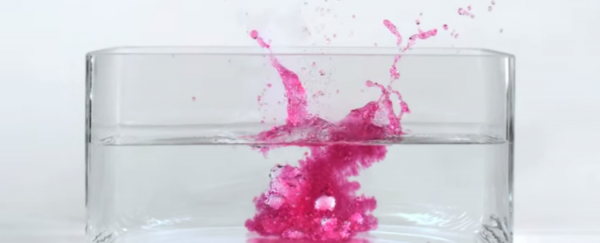Caesium is a curious alkali metal known to be extremely reactive and super-explosive when it comes into contact with water - even at temperatures of -116 °C (−177 °F). As part of a short video series capturing some of the most beautiful chemical explosions, the team at SciencePhotoLibrary decided to film a sample of caesium reacting with water using a high-speed camera.
The caesium sample they used was kept in liquid nitrogen before it was dropped into the water from about a metre above. The water was set to room temperature, and contained phenolphthalein, a chemical compound that turns colourless in acidic solutions and pink in basic solutions.
"When we were filming our caesium in water, we expected it to cause a big explosion, much like the rubidium did," they write at their YouTube channel. "Instead we saw this: a series of small, pulsating explosions as it sank. We shot this three times and it was the same each time."
So what's going on here? When caesium makes contact with water, it reacts very rapidly, and forms a colourless solution of caesium hydroxide (CsOH) and hydrogen gas (H2). This reaction is so fast, that if you tried pouring water into a test tube containing caesium (don't do it), the glass container would shatter all over the place.
Here's what it looks like usually:
But in the SciencePhotoLibrary footage, that's not what happens. The explosion is smaller, and more contained, sinking down into the water, surrounded by large plumes of hydrogen bubbles.
The team responsible for the experiment is stumped, and we're not entirely sure what's going on here either. It could be that by cooling down the caesium sample, the reaction has been slowed down, so instead of the usual fireworks, we get a more languid series of explosions pulsing through the water. Or perhaps the large hydrogen bubbles produced by the reaction are shielding the caesium from the water somewhat, and in that way, slowing down the reaction.
If anyone knows the answer, contact us on Facebook, or email us. We'd love to hear from you!
